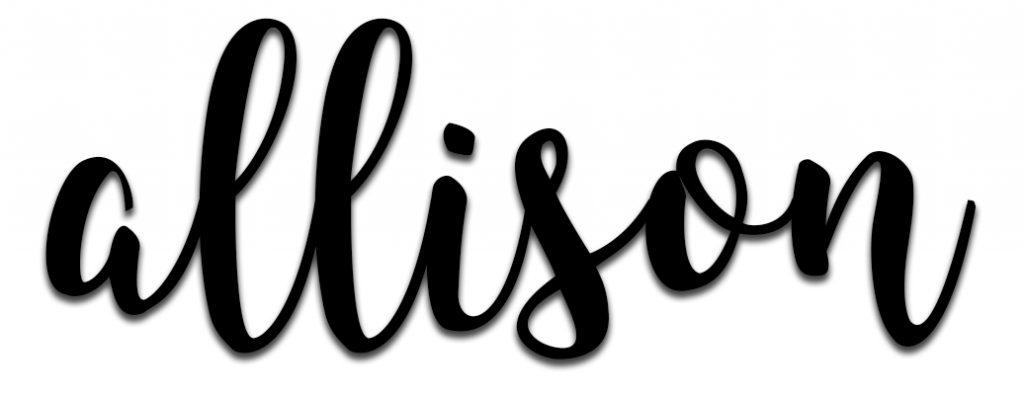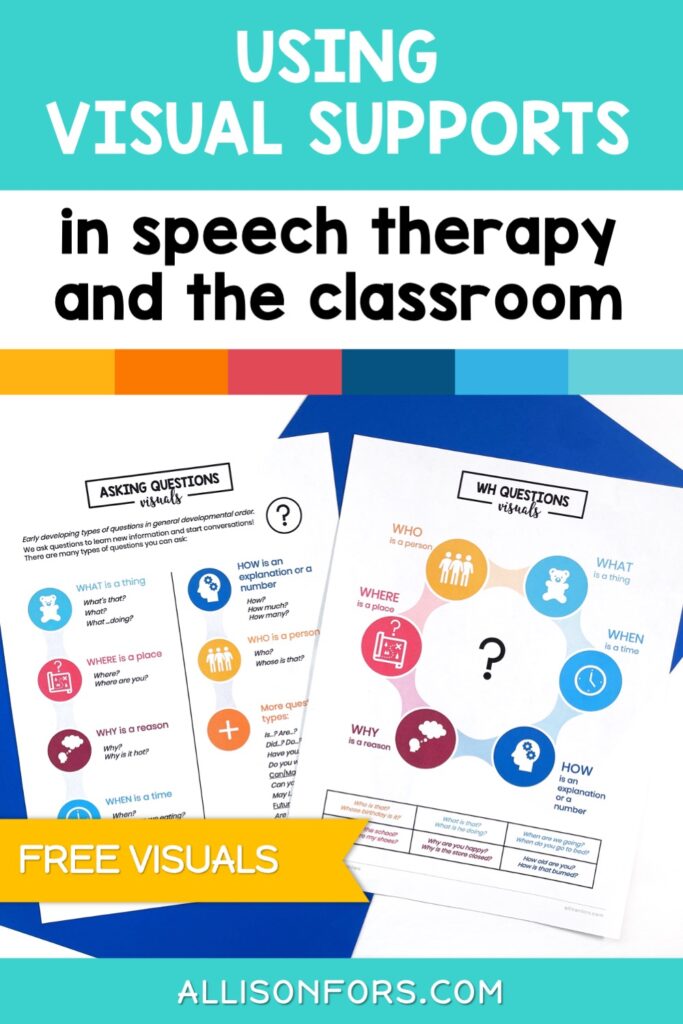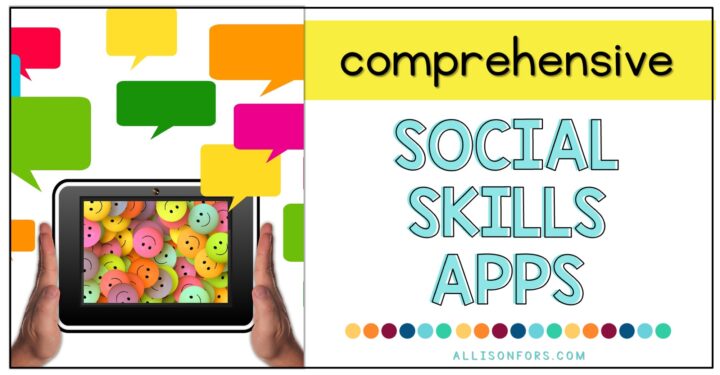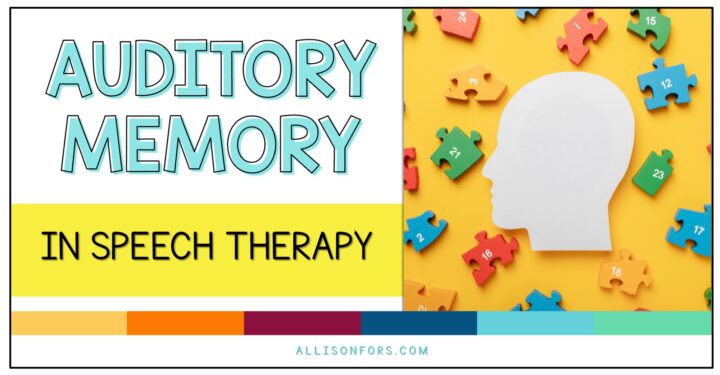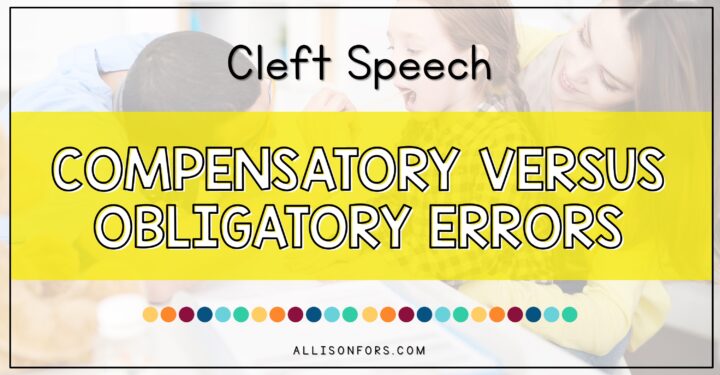
Why You Should Be Using Visual Supports in Speech Therapy
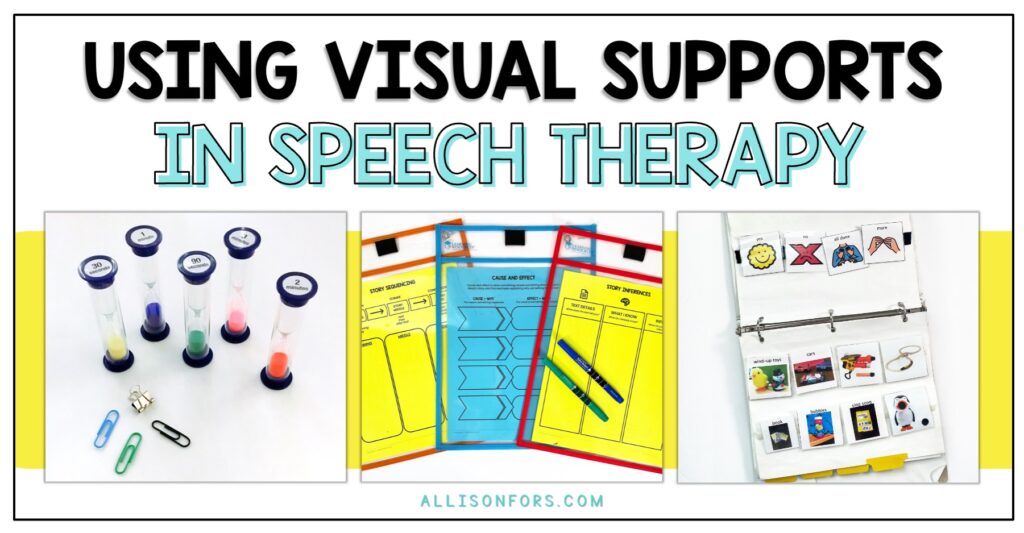
Visual supports enhance the learning process and benefit all students!
They are something that everyone should be incorporating in their therapy rooms, classrooms, and other environments. Visuals can improve understanding, build confidence in new skills, encourage independence, and provide structure.
What are visual supports?
Visuals facilitate a more concrete representation of information, as opposed to spoken words. They enable students to understand, process, and retain information better. This can help with attention, memory, communication, literacy, teaching routines, and behaviors.
There are many types of visual supports. Some common visuals:
- picture schedules or calendars
- checklists
- graphic organizers
- anchor charts
- choice boards
- picture cues
- visual rules
- visual timers/sand timers
- symbols
- sentence strips
- tangible objects
- photographs

Ways to Use Visual Supports
Visual supports can help students, no matter how they learn. They are some of my favorite ways to support and cue my students. Here are some examples of ways to incorporate them in speech therapy or the classroom:
Introduce and teach new skills. Visuals can be beneficial when teaching a new concept. They provide a more concrete interpretation of the skill, allowing for easier comprehension and retention. They can help make associations between pieces of information. For example, use sentence strips when teaching students to expand utterances, incorporate certain grammar concepts (such as conjunctions), or how to formulate questions.
Support communication. You can use an actual system such as a picture board or PECS (picture exchange communication system) or something less structured, such as the student handing or pointing to a “yes” or “no” picture icon.
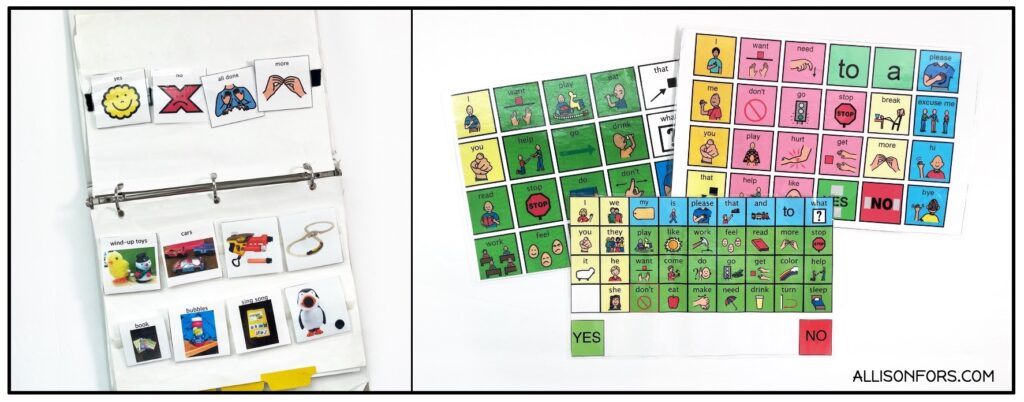
Daily schedules and routines. Use visual schedules and calendars to help students understand what comes next. This is ideal for helping with transitions, managing expectations, and reducing the anxiety of the unknown.
Foster independence. Providing visuals can help the adult instruction take a back seat. For example, use a visual schedule so the student knows what comes next and can begin the following task without instruction. You can also set up pictures for a routine sequence, such as hand washing visuals next to the sink.
Following step-by-step directions. Use when explaining directions instead of verbally giving directions. This is especially helpful with long directions or for children who struggle with memory and following multi-step directions.
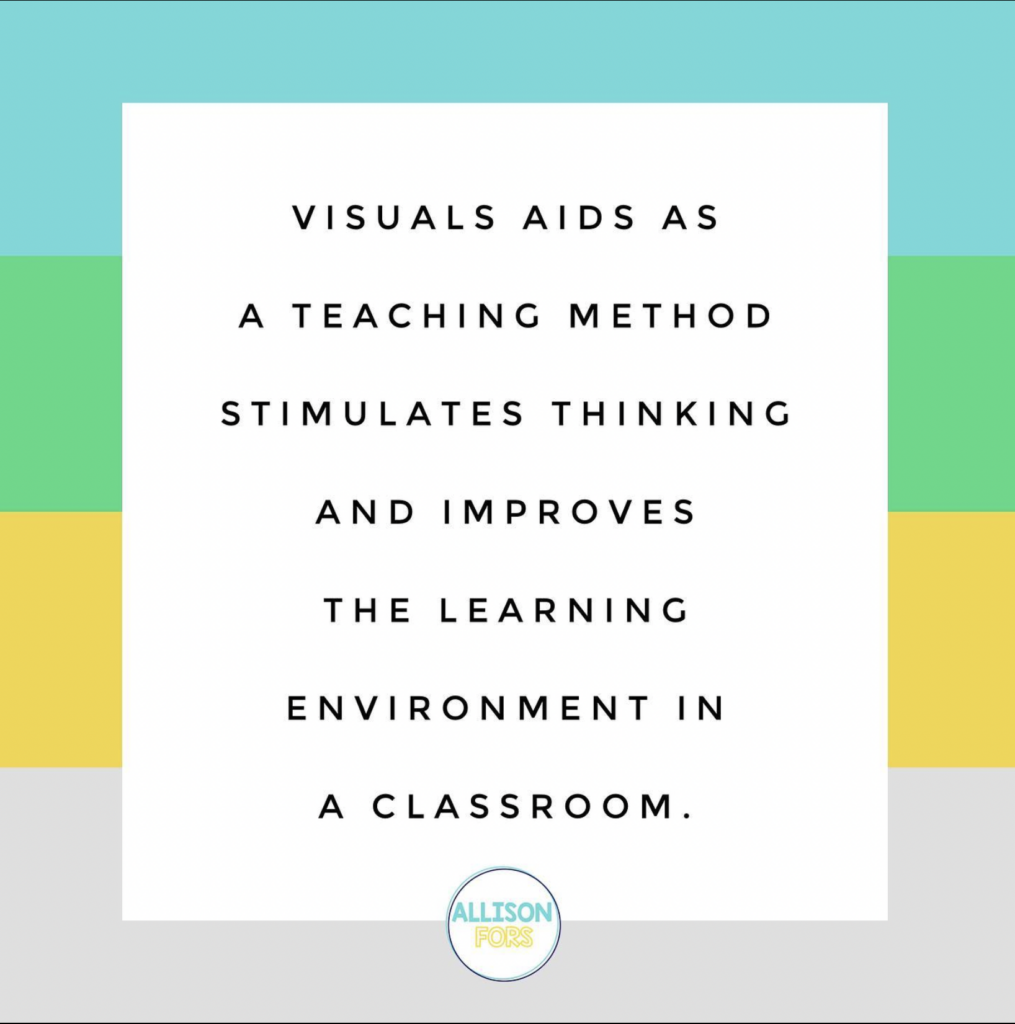
The Benefits of Visuals Aids
All students can benefit from visual supports and strategies! Research concludes that using visual aids as a teaching method stimulates thinking and improves learning.
Visual aids enhance the learning process by:
- helping retain more concepts permanently.
- providing a complete example for conceptual thinking.
- creating an environment of interest for the students.
- helping to increase the vocabulary of the students.
Source: Shabiralyani, G., Shahzad Hasan, K., Hamad, N., & Iqbal, N. (2015). Impact of Visual Aids in Enhancing the Learning Process Case Research. Journal of Education and Practice, 6, 226-234.
Tips
Make visuals portable, durable, and easily accessible. You can do this by making mini versions and laminating the pages. I like putting them on a keyring and hanging them in a high-traffic area.
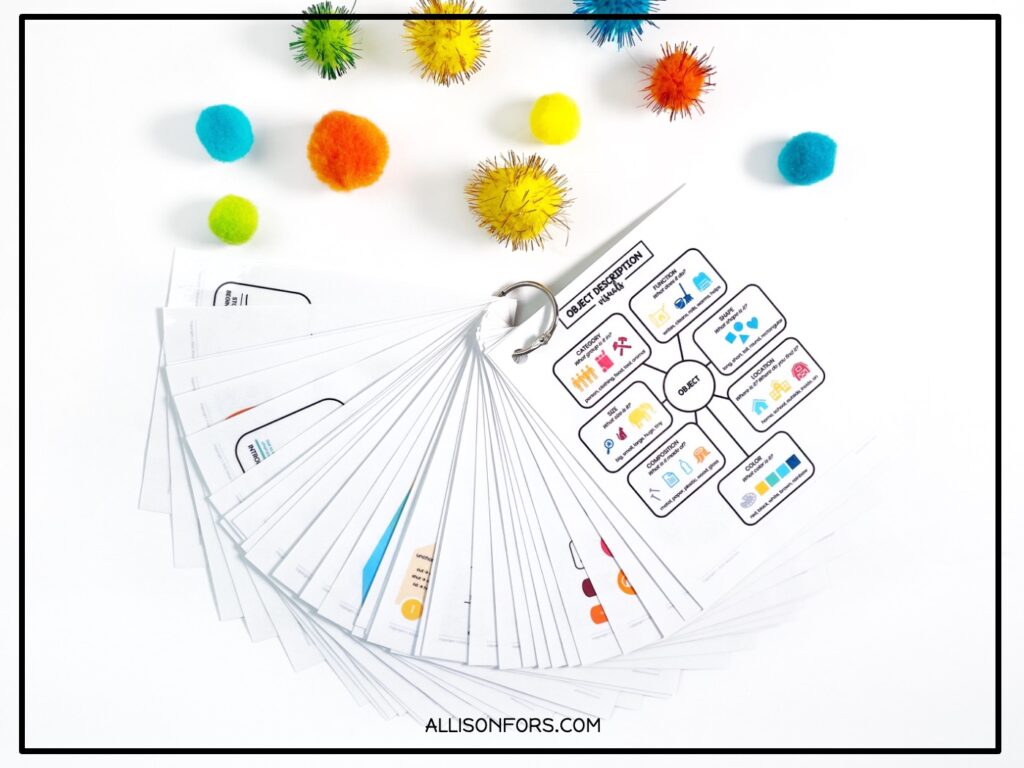
We use visuals without even realizing it most of the time to build and scaffold new skills. Although using visual supports may be second nature to educators, another tip is not to forget the importance of educating caregivers on how they can be integrated into daily life.
Language Visuals and Graphic Organizers
I incorporate many visuals in therapy and find myself making them for specific students and concepts – frequently in the middle of a session! I decided to streamline all my language visuals by creating a more thorough, visually clean set to use with accompanying graphic organizers.
It includes visual supports for:
- language
- vocabulary
- grammar
- story concepts/reading comprehension
- basic concepts
This is a versatile product to aid in teaching concepts, and to use with other activities. The graphic organizers are also open-ended and flexible.
Free Wh Question Visuals – Download free “WH Questions” and “Asking Questions” visual pages in color and black & white!
Do you use visual supports in speech therapy or in the classroom?
